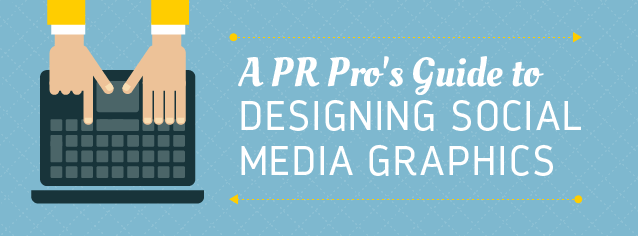With Instagram, Pinterest and other social media channels hungry for visual content, the ability to develop engaging imagery is now essential for public relations professionals.

|
| , President & Creative Director, Peter Hill Design |
1. Keep It Simple (And Consistent):
- Filters & Effects: Nothing screams amateur more than filters, the altered tones or coloring made popular by Instagram, extra borders, or shadows! Sure these may be appropriate for your personal social media accounts, but for your brand, we agree with Junius when she says skip the filters and extra effects!
- Brand Standards: Keeping social media and blog graphics consistent in both size and appearance will help maintain your brand’s identity while appearing polished and professional. “The best way to maintain consistency with the graphics your brand uses is to build out your brand standards and guidelines right away,” said Junius. “This creates a solid foundation for any future social media or blog asset creation.”
- Fonts: When deciding upon fonts and sizing options to incorporate into your brand standards, Junius explained that a good rule of thumb is to choose three of each and stick with them. As tempting as it can be, don't go for the over-stylized or oversized. Simple is best.
2. Know When To Create (And When To Outsource) Your Social Media Graphic Design:
In today’s world, PR pros have plenty of resources available to create free or low-cost graphics for social media or blog assets. Just to name a few:- Canva, an “amazingly simple graphic design” platform lauded by Canva chief evangelist Guy Kawasaki at .
- Infogr.am, a "data visualization product that brings out the best in your data."
- Photoshop, the popular in-house design tool, which Junius recommends PR pros employ.
By taking the time to learn how to use the tools listed above, among others, PR pros can limit their graphics appearing amateurish and remove the chance of falling victim to the endless array of overlays, filters and borders in an attempt to jazz up visual content.
According to Junius, “basic fonts, curves, triple-thick borders and no kerning” typically indicate to her the work of a novice designer. (*Kerning is the proportionally adjusting the space between characters in a font.) One way to avoid the look of amateur design – over-stylized photos, shadows, too many borders, not enough white space and typography gaffes – is to outsource graphic design work to the professionals. Of course, this often depends on your timelines and budgets.
3. Think Strategically About Colors and White Space:
Without a doubt visual assets should be high on your priority list when developing your brand’s standards. Think tones and photo style when considering how you want your brand to be portrayed.Junius spoke about how big brands, like Target, are instantly recognizable from their imagery. While using a variety of visual assets, Target maintains a consistent and signature style featuring big, bold product shots with lots of white space.
4. Be Wary of Copyrights:
PR pros need to consider not only what their social media and blog graphics look like, but also from where they originate."There is always a risk involved when using Google images," noted Junius. "You can’t be positive where the image came from, which opens you up to liability issues. A company like Getty Images has data crawlers to find infringement of its imagery so it’s important to properly source and, even better, purchase your images."
Options for purchasing photos assets for use on social media include iStock, Veer Images and Getty Images. While stock imagery can be useful, it’s obvious to most readers that it is in fact stock imagery. Think Vince Vaughn stock photos. Even better is having a library of your own photos. Said Junius: “We’ve found that any time we have used our own imagery [in regards to social media], our posts receive almost twice the engagement."

|
| Megan Junius & Leila Hirsch |
- ""
- ""
- ""

